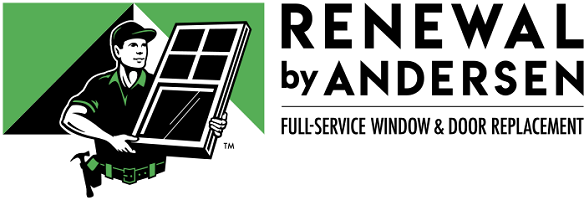What's the Difference Between Full-Frame and Insert Window Replacement?
Understanding the difference between the two, and which method is right for your home, is a key step in your project.
We know our customers are interested in a LOT of things when it comes to new windows. Time and cost to replace them. The aesthetics of the product. Energy-efficiency and improved home comfort. But when the jargon begins – sash, lineals, grilles, U-Factor values, visible transparency, thermal efficiency – it’s easy to get lost in myriad of details and information overload. But it doesn’t have to be that way!
What sets Renewal by Andersen apart is our focus on the whole-window performance for improved comfort of your home. Where competitors concentrate solely on glass or the material in the frame, we understand that the best window for you is more than the sum of its parts. A functional window isn’t just a pane of glass. Neglecting the condition of the frame, sash, casing, and trim can lead to unsightly aesthetics, as well as expensive energy bills and uncomfortable summers and winters. At Renewal by Andersen, we understand that proper installation is a precise sequence of many crucial steps.
Whether your home overlooks the Alaskan tundra or the Sonoran Desert, our expert craftsmen will do the job right. In fact, Renewal by Andersen is one of the few companies to warrant the installation process as well as the window,† granting customers the confidence and security they deserve.
Because installation is so important to us, we want to talk about one of the most common questions we hear from homeowners who are investigating all of their options and all of the factors that go into making an informed window replacement decision—full-frame versus insert installation: what’s the difference? (And, honestly, what do they even mean?)
So if you’re considering window replacement and wondering whether full-frame or insert replacement is the right choice for your home (or you just want to learn more about fenestration), read on as we take a closer look at both options, their advantages and disadvantages, and other factors to consider.
Insert Window Replacement
Insert replacement, also known as retrofitting, involves the removal of the existing sash and glass while leaving the existing frame intact. The new window is then installed into the existing frame. This method is often used when the frame is in good condition and the homeowner wants to update the style of the window or improve energy efficiency.
Advantages:
Disadvantages:
Full-Frame Window Replacement
Full-frame replacement involves the complete removal of the window frame and sash and the installation of a new frame and sash. This method is often used in cases where the existing frame is severely damaged or the homeowner wants to change the window's size, shape, or style. Full-frame replacement is a more extensive process than insert replacement and can require the removal of siding or brickwork around the window.
Advantages:
Disadvantages:
Factors to Consider
When deciding between full-frame and insert replacement, several factors should be considered:
When deciding between full-frame window replacement and insert window replacement, it's important to consider the pros and cons of each method and your specific needs and budget. Because not every situation can use either method, consulting a professional when you’re thinking about replacement is an excellent first step. When you work with us, at your design consultation appointment, your consultant can help determine which option is right for your home.
Regardless of which option is recommended, Renewal by Andersen® replacement windows have glass options that can provide numerous benefits, such as increased energy efficiency, improved sound insulation and UV reduction, and a refreshed look for your home.
If you have any further questions about which method is right for your home, and what your options are, we’d love to speak with you. Schedule your consultation today and we can provide additional insights and advice based on your specific situation.
We hope this blog post has helped you understand the differences between full-frame and insert window replacement options and has provided you with the information you need to make an informed decision for your home.

